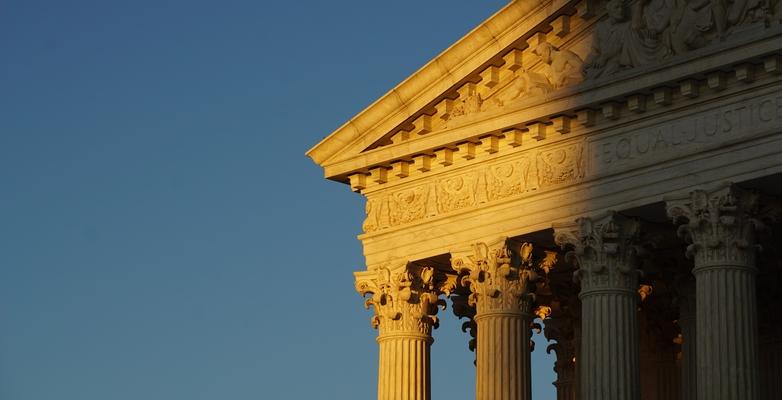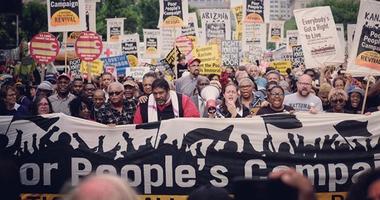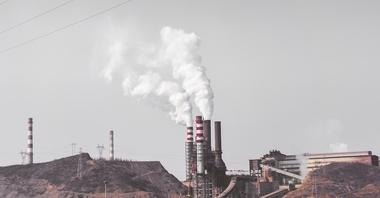
The Supreme Court Failed Us. What Now?
The Court’s decision on “West Virginia vs. EPA” goes out of its way to limit EPA’s ability to limit climate-changing emissions at a critical time for the planet. But it’s not the end of the fight.
There’s no way to sugarcoat this. Today’s Supreme Court decision on “West Virginia vs. EPA” is a major setback for efforts to stop global warming, both in the US and across the world.
But here’s the important caveat: It could have been much worse. And the fight’s not over.
The decision closes the door on perhaps the single most effective path EPA can take to help stop global warming, by pushing dirty coal-fired power plants to switch to cleaner renewable sources of electricity.
It doesn’t close them all.
Critically, the decision also raises the (already planet-sized) stakes in the push for a real climate bill before the fall’s midterm elections. (More on that later.)
Take Action: Tell Congress to Pass a Real Climate Bill for America
Four key takeaways from a massive day for the climate at the Supreme Court. Because there is a road forward. It’s not the one we want. But in a dark time and following last week’s catastrophic “Dobbs” and New York gun law decisions, we’ll take it.
EPA Can Still Regulate Carbon Emissions. Just Not Like the CPP Said.
“West Virginia vs. EPA” began back in 2015, when then-President Obama announced the Clean Power Plan (CPP), the first-ever federal rule for reducing greenhouse gas pollution from the power sector in all 50 states.
EPA based its authority for the CPP on Section 111 of the Clean Air Act, which empowered the agency to set standards for “emissions of air pollutants which reflects the degree of emission limitation achievable through the application of the best system of emission reduction.”
From EPA’s perspective, “the best system of emission reduction” was to transition dirty coal-fired power plants to cleaner alternatives, increasingly powered by wind and solar, a process as the court terms “demand shifting.” The CPP set individual emissions reduction targets for each state that would in effect push power operators to make this transition.
It was big. It was bold. And by targeting the nation’s second-biggest source of greenhouse gas emissions, the CPP had incredible potential for the climate.
It also never got off the ground. Even before the CPP was implemented, West Virginia and a series of other coal state attorneys general challenged the law in the DC circuit court, arguing it exceeded EPA’s jurisdiction under the Clean Air Act. In a nutshell, part of the case hinges on the reading of “best system of emissions reduction.” West Virginia and others argued that the statute only authorized EPA to mandate technological changes to individual power plants, not a sector-wide shift.
Today, the Supreme Court agreed, with a 6-3 ruling in favor of West Virginia and the coalition of coal states. Writing for the majority, Chief Justice John Roberts argues:
“Capping carbon dioxide emissions at a level that will force a nationwide transition away from the use of coal to generate electricity may be a sensible ‘solution to the crisis of the day. But it is not plausible that Congress gave EPA the authority to adopt on its own such a regulatory scheme . . . [T]he only question before the Court is more narrow: whether the “best system of emission reduction” identified by EPA in the Clean Power Plan was within the authority granted to the Agency in Section 111(d) of the Clean Air Act. For the reasons given, the answer is no.”
It’s important to unpack with this means and what it doesn’t. The decision effectively bars EPA from regulating emissions through demand shifting, or pushing power generators to cleaner sources.
It does not prevent EPA from regulating greenhouse gas emissions by other means. What will and will not satisfy the court as within the agency’s authority will undoubtedly be the subject of many cases to come. But for today, the key takeaway is while the court closed off one avenue for rapid emissions reduction, others – albeit narrower and possibly less effective – remain open.
This Was a Deliberate Hit Job
If you’re wondering why the Court was ruling on a statute from 2015, you’re not alone. The CPP never went into effect. Not only that, but thanks to innovation and competition in the marketplace, the power sector already met the plan’s (modest) targets – a whole decade early.
In short, there was no law on the books. No one was being injured. That fact didn’t stop the court from taking the almost unprecedented step of taking a case on a statute that did not actively exist.
As Justice Kagan notes in her eloquent dissent, “the Court’s docket is discretionary, and because no one is now subject to the Clean Power Plan’s terms, there was no reason to reach out to decide this case.”
In other words, the court had to take the highly unusual step of granting standing to the states when no injury had occurred and there was no compelling issue forcing them to consider it.
The only way to read this decision is as a move by a reactionary and fossil fuel friendly majority on the court to preempt a major new rule or climate initiative by the Biden Administration’s EPA. And yes, that should be troubling.
The Case Sets a Nightmare Precedent
Today’s case sets a deeply troublesome precedent that opens the door to a flood of nuisance anti-government lawsuits that could potentially touch agencies across the executive branch.
One of the more worrying parts of the decision was the invocation of the case as a “major questions issue.” In short, this doctrine boils down to the belief that agencies cannot take actions with significant financial impact unless expressly authorized by Congress.
While the doctrine may sound eminently reasonable, it is out of line with the way government actually works. Putting aside the partisan rancor preventing Congress from doing much of anything these days, Congress writes laws broadly to point the government in a general direction and trusts the expertise of the relevant agencies to decide the best way to get there.
Put another way, Congress writes laws that generally point to a spot on a map. They do not provide turn-by-turn style directions á la Google Maps on how to get there. In part because few in Congress are experts on water quality and carbon emissions and building standards, for example. That’s the job of the actual experts at the agency tasked with implementing the law.
By designating energy sector power sources as a major questions issue, the court sets its own authority above that of the real experts at EPA who’ve spent their careers studying climate and the most effective approaches to reducing global warming pollution.
This. Is Not. Good.
Again, Kagan’s dissent nails it:
“Whatever else this Court may know about, it does not have a clue about how to address climate change. And let’s say the obvious: The stakes here are high. Yet the Court today prevents congressionally authorized agency action to curb power plants’ carbon dioxide emissions. The Court appoints itself—instead of Congress or the expert agency—the decisionmaker on climate policy. I cannot think of many things more frightening.”
So what is a “major question”? Well, the court fails to specify hard-and-fast criteria, leaving the nation’s highest legal body to apparently rely on a “know it when you see it” gut check.
The result is to open the door to a flood of lawsuits from polluters and others whose decisions may cause tremendous harm to the planet or communities but find regulations touch on “major questions.” It’s not just climate measures either – the ruling sets a fruitful precedent for narrowing almost any federal statute the fossil fuel lobby and other special interests don’t like.
If that sounds like a way to preempt big policies on climate and beyond from even being issued in the first place, that’s exactly the point.
The Fight Isn’t Over
So if there’s a squint-and-you-can-see-it silver lining here, it’s the fact that this decision – if it was going to come down this way - couldn’t have come at a better time.
No, really.
After a year and more of Will They/Won’t They? on climate action and six months after the failure of the Build Back Better Act, Senate leadership looks poised to consider a bill with a host of clean energy tax credits and other climate solutions. The catch here is that this summer is realistically the last window we have to pass this kind of bill before the realities of the midterm elections take over.
This is where the rest of us come in. We’re as tired as you are of the Congressional sideshow. We’ve been asking you for over a year now to contact your representatives in Congress to call for the big climate bill the nation needs to stop rising temperatures and jumpstart energy transition. And we get the fatigue – really we do.
But this is for all the marbles. The science is clear that we have to turn the corner on fossil fuel emissions by 2025 to have any shot of holding rising temperatures to the 1.5 Celsius degree red line. And you only have to turn on the news to read about the worst drought in 1,200 years baking the West or the lethal heatwaves cooking India and Pakistan to get a sense of the new normal ahead if we don’t act.
Plus, with the midterms looming, it’s the last chance we’ll get in time for the US to make a real difference in the climate fight. Because there is such a thing as too little, too late. And it’s coming up fast.
So yeah, we’ve asked before. We’re asking again. Because if there’s any chance of stopping warming and preventing the worst of the worst of climate change, we owe it to ourselves, everyone we love, and generations to come to fight until the very end.
We’d say it’s worth it.




